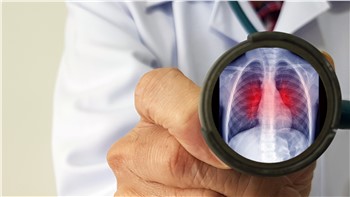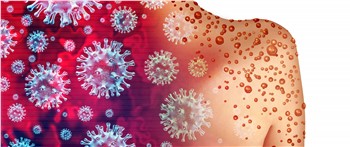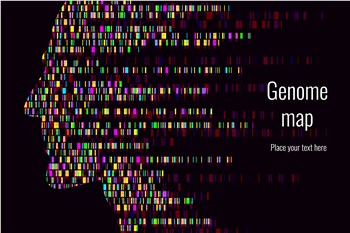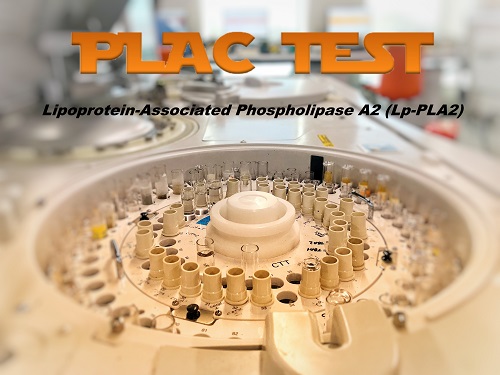Turkey's

Reference Laboratory
Services
Menu
Drug Levels
Microbiology
Clinical Biochemistry
Congenital Metabolic Disorders
Haematology Laboratory
Prenatal Screening Tests
Molecular Microbiology
Allergies
Transfusion Centers
LabBlog!

27 Ekm.22
Mevsimsel grip hastalığının etkenlerinden olan Influenza A ve B, Koronavirüs hastalığının etkeni SARS-CoV-2 virüsü, Solunum sinsityal virüsü enfeksiyonu etkeni RSV, Adenoviral solunum yolu enfeksiyonları etkeni olan adenovirüslerin hızlı tanısını sağlayan bir antijen testidir.

18 Tem.22
İnsanlarda ilk defa 1970 yılında Kongo Demokratik Cumhuriyeti’nde tespit edilmiştir. Sonrasında Orta ve Batı Afrika’daki ülkelerde görülen bu hastalığın sıklığı tam olarak bilinmemekle birlikte Kongo Demokratik Cumhuriyeti’nde 2005’e kadar yıllık 1000’e yakın olgu bildirilmiştir. Hastalık dönem dönem Afrika kıtasından enfekte hayvanlar ve insanlar aracılığıyla diğer kıtalara yayılmakta ve buralarda küçük küçük salgınlar yapmaktadır.

14 Ock.22
Genetik bir miras olarak ebeveynlerimizden aldığımız DNA’mızda bizlere ait bireysel özellikleri içeren tüm bilgiler bulunmaktadır. Bu bilgiler kan grubu, boy, kilo gibi bireysel özelliklerimizden, diyabet, kanser, kardiyovasküler hastalıklar gibi yüzlerce farklı duruma yatkınlık yada direnci belirleyen özelliklerle ilişkilidir. DNA’mızdaki bu bilgilerin çevresel faktörlerle etkileşmesi sonucu kişisel özelliklerimiz ve hastalıklar ortaya çıkabilmektedir.

22 Ara.21
PLAC TEST (Lp- PLA2 Aktivitesi) Kalp Hastalığı Riskinizi Biliyor musunuz ?
PLAC testi; kanda Lp-PLA2 enzim aktivitesini ölçen ve koroner kalp hastalığı riskini tahmin etmek için kullanılan bir belirteçtir.
Molecular methods allow with no room for doubt a rapid and accurate means of identifying microorganisms. Molecular microbiology includes methods of diagnosing bacteria, viruses and parasites on which cultures can not be obtained or if they can these would take much too long.The Polymerase Chain Reaction (PCR) method allows for the reproduction of DNA from minute quantities to be found on a sample thereby allowing for identification of the microorganism. DNA based methods allow for identification of the disease factor directly from the sample. These methods thus allow for a disease to be diagnosed rapidly and assist in treatment to be provided as soon as possible. Many tests using quantitative and qualitative analysis methods can be carried out at Acıbadem Labmed Molecular Microbiology Laboratories.Molecular Microbiology
These tests use different methods such as real time PCR, hybrid capture and in-house methods.
Visible electrophoresis imaging and recording is carried out for samples on which in-house methods are used. Results obtained through quantitative or qualitative methods provide physicians the means to track their patients’ treatment and prognosis.
For example, in a patient pre-diagnosed with menengitis, molecular tests for a number of microorganisms which could lead to this condition such as the Herpes simplex virus or tuberculosis can be completed and provide results within 24 hours. Or, for example, when a definite diagnosis of toxoplasma gondii can not be made on an infant whose pregnant mother has undergone all serologic tests, PCR tests may be benefitted from. In this and similar cases, molecular testing assumes a life saving role.
These examples can be multiplied;
These tests may be used to look into the presence of Aspergillus, Candida, or Pneumocystis carini in patients lying in intensive care or the presence of Entamoeba histolytica in abscesses of the brain or liver.
A common point in all molecular microbiology analyses
Positive or negative controls in conjunction with internal controls are implemented for all analyses performed. When new working procedures are to be put into action only those procedures that have been duly validated are used. Measurement reliability is assured with pipette calibrations, test validations as well as interior and exterior controls.
Tests in the Molecular Microbiology
External Quality Control Program are; HBV DNA, HCV RNA, Mycobacterium tuberculosis DNA, HCV genotyping, CMV DNA (quantitative), Parvovirus B 19 DNA, HIV-1 RNA, HSV 1-2, Toxoplasma gondii DNA, EBV DNA (quantitative), HPV, VZV, Chlamydia trachomatis DNA, Chlamydia pneumoniae DNA, Mycoplasmapneumoniae DNA, Neisseria gonorrhoeae DNA, Bordetella pertussis DNA and Legionella pneumophilia DNAMolecular
Microbiology tests which we conduct:
Actinomyces DNA PCRAdenovirus DNA PCRAspergillus DNA PCRBordetella pertussis DNA PCRBK virus DNABrucella DNA PCRCandida DNA PCRChlamydia pneumoniae DNA PCRChlamydia trachomatis DNA PCRCMV DNA PCR, quantitativeEBV DNA PCR, quantitativeEntamoeba histolytica DNA PCRE.coli DNA PCREnterovirus RNA PCREpstein Barr virusHepatitis B virus (HBV) DNA PCR, quantitativeHepatitis B virus / Lamivudine resistance(YMDD motive)Human Herpes virus 6(HHV 6) DNA PCRHuman Herpes virus 8(HHV 8) DNA PCRHerpes simplex virus (HSV)DNA tip 1&2 PCRHCV RNA PCR, quantitativeHCV GenotypeHDV RNA PCRHGV RNA PCRHuman Immunodeficiency virus (HIV) RNA, quantitative, PCRHIV-1 genotype resistance analysisHPV DNA typingHSV DNA PCRInfluenza A (H1N1) RNA PCRInfluenza A / BJC VirusCriema Congo Haemorrhagic Fever virus (CCHF) RNA PCRLegionella pneumophila DNA PCRLeishmania spp. DNA PCRMumps RNA PCRNeisseria gonorrhoeae DNA PCRParvovirus B19 DNA PCRPneumocystis jirovecii(carinii) DNA PCRMycobacteria molecular rapid typing (PCR/DNA series analysis)Mycobacterium tuberculosis DNA PCRMycobacterium tuberculosis rapidRifampicin resistanceMycoplasma spp. DNA PCRMycoplasma pneumoniae DNA PCRNeisseria gonorrhoeae DNA PCR Neisseria meningitidis DNA PCR Nocardia DNA PCRNorwalk-like virus DNA PCRParvovirus B19 DNA PCRPneumocystis carinii (jirovechii) DNA PCRRespiratory Syncytial virüs (RSV) RNA PCRRespiratoy Viral Panel (Human adenovirus, Human metapneumo virus, Human coronavirus 229E/NL63, Human coronavirus, OC43 / HKU1, Human parainfluenza virus 1, Human parainfluenza virus 2, Human parainfluenza virus 3, Influenza A virus, Influenza B virus, Human respiratory syncytial virus A, Human respiratory syncytial virus B and Human Rhinovirus A / B)Rotavirus DNA PCRRubella RNA PCRToxoplasma gondii DNA PCRTreponema pallidum DNA PCRVaricella zoster virus (VZV) DNA PCRVRE DNA PClinical laboratories use of the tandem massspectrometry (LC-MS/MS) method has increased in the past 10-15 years.
LC-MS/MS systems have become the systems of choice in clinical laboratories due to the fact that their analytic specificity is higher than conventional methods such as the HPLC, specifically in the identification of low molecular weight analytes and in comparison to immunassay methods. Metabolic scans in newborn infants, amino acids, vitamins, steroid hormones, immunosuppresive drug levels, catecholamines and metabolyte analyses are the reason why LC-MS/MS systems are most frequently used by clinical laboratories.


